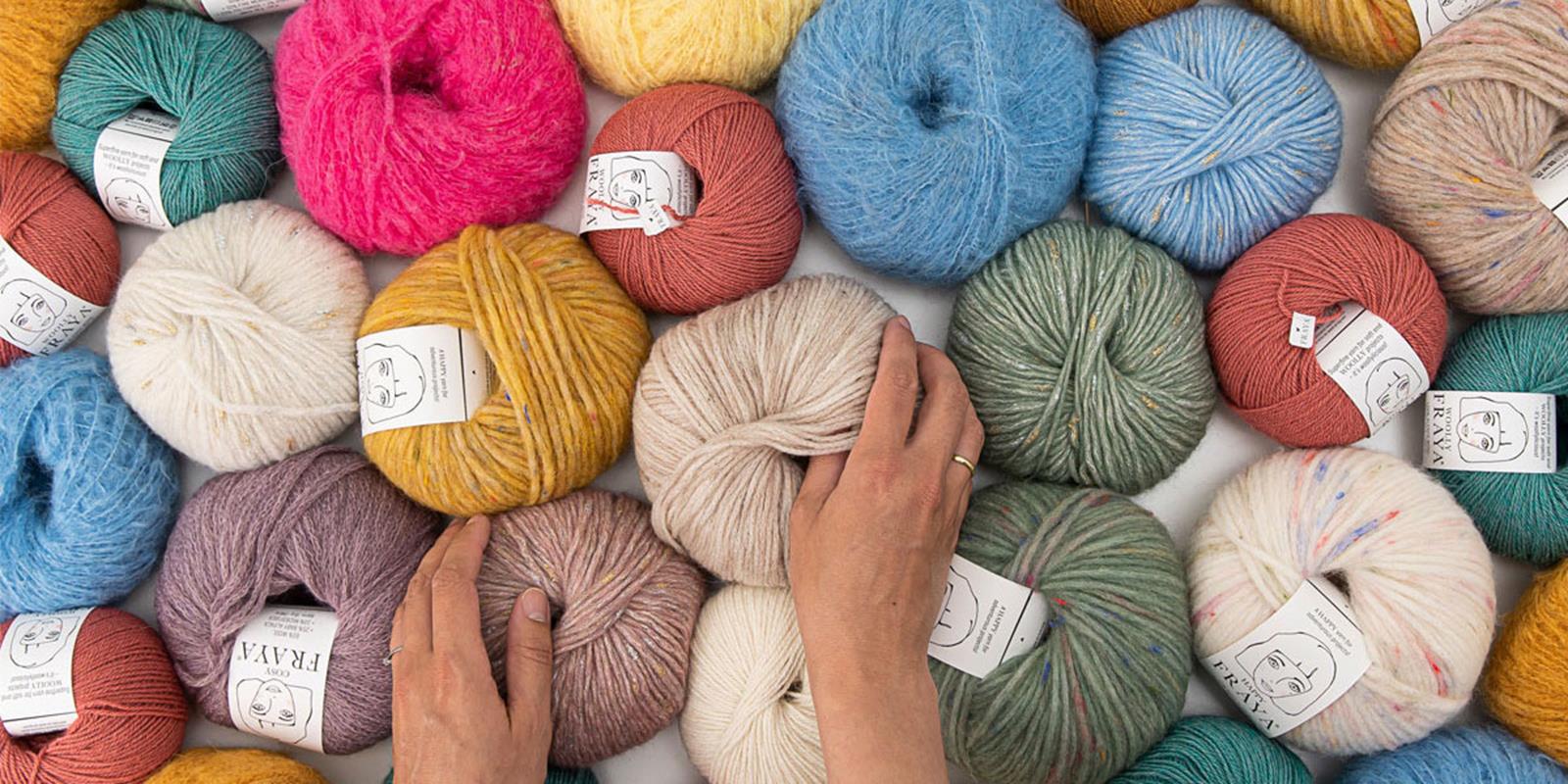Have you found your next knitting project but want to knit with a different yarn?
The material, colour selection and price can all be reasons to find a yarn alternative. You may not be able to achieve the right gauge, or you may prefer to knit without a companion yarn - or with.
Either way, here are some tips on how to find the right yarn alternative.
Several factors come into play when it comes to finding a good yarn alternative:
- Knitting tension of the yarn
- Fiber composition of the yarn
- Yarn yardage
The most important thing you can do when choosing an alternative yarn is to make a knitting swatch. Both to make sure you match the gauge you need, to find the right needle size and to get a feel for how the look will turn out.
The gauge is one of the most important factors in finding a suitable yarn alternative. The knitting tension/gauge is always indicated on the band of the yarn so you can easily compare the different qualities.
Please note that more and more knitting patterns use multiple strands of yarn - this could consist of a wool yarn combined with a strand of silk mohair. In this case, the two yarns knitted together will give you the knitting tension of the pattern.
Therefore, if you are knitting with two (or more) strands of yarn, you have two options when looking for yarn alternatives:
1. Find alternatives for both yarns. You'll need to look at the band of each yarn and find something with a similar gauge.
2. Find an alternative that matches the gauge of the pattern. However, please note that the expression may change slightly from the original pattern. You will experience a more "clean" view of the stitches and loose the "fluffiness".
→ Shop yarn by gauge
The fibre composition of the yarn is crucial to how the finished knitting project will look. In some cases, you will come across yarns that consist of 100% wool, for example, while in other cases you will encounter blends of two or more fibres.
There are many different types of fibres with their own unique characters that can work well for some projects - and not so well for others! That's why it can't be said enough: don't forget to make a knitting swatch!
A good rule of thumb is to choose a yarn alternative with approximately the same fibre content as the original yarn. This way, the finished work looks as close to the original as possible. However, this makes the range of alternatives significantly smaller.
You can choose a yarn with a different fibre content, but be aware that the type you choose will affect the look and stretch of your knitting or crochet project. Cotton yarn, for example, has a beautiful drape, but it can feel heavy and doesn't hold its shape as well, so it won't necessarily work as a good alternative to wool.
Yardage in itself is not important when looking for a yarn alternative. This, in turn, is a determining factor in how many skeins of yarn you need for your project! Assuming your gauge is correct, it's quite easy to calculate how much yarn you need for each knitting project.
The yardage of yarns can be different, even if the fibre content is similar. Therefore, it's important to compare the original yarn with the yarn alternative to determine the number of skeins you need to order.
To make the calculation, you need the following:
- The amount of yarn in the recipe - corresponding to the size you will be knitting
- The yardage of the yarn used in the pattern
- The yardage of the yarn you want to knit with
Example of yarn alternative
Original yarn (Yarn A)
Quantity: 700g yarn
Knitting gauge: 20 stitches
Yardage: 50g = 108 meters
Yarn alternative (Yarn B)
Knitting gauge: 19-20 stitches
Yardage: 50g = 120 meters
1. Calculate how many skeins of Yarn A you need for the pattern
Quantity from pattern / weight of Yarn A:
700 / 50 = 14 balls
2. Calculate the total yardage of Yarn A
Yardage of yarn x number of skeins:
108 * 14 = 1.512 meters
3. Calculate how many skeins of Yarn B you need based on the yardage
Total yardage of Yarn A / yardage of Yarn B:
1,512 / 120 = 12.6 skeins
Note: The yarn alternative in the example has a larger yardage than the original yarn; therefore, the calculated yarn consumption is less than the pattern. However, we recommend that you round up to be on the safe side, in this case choosing 13-14 skeins.
